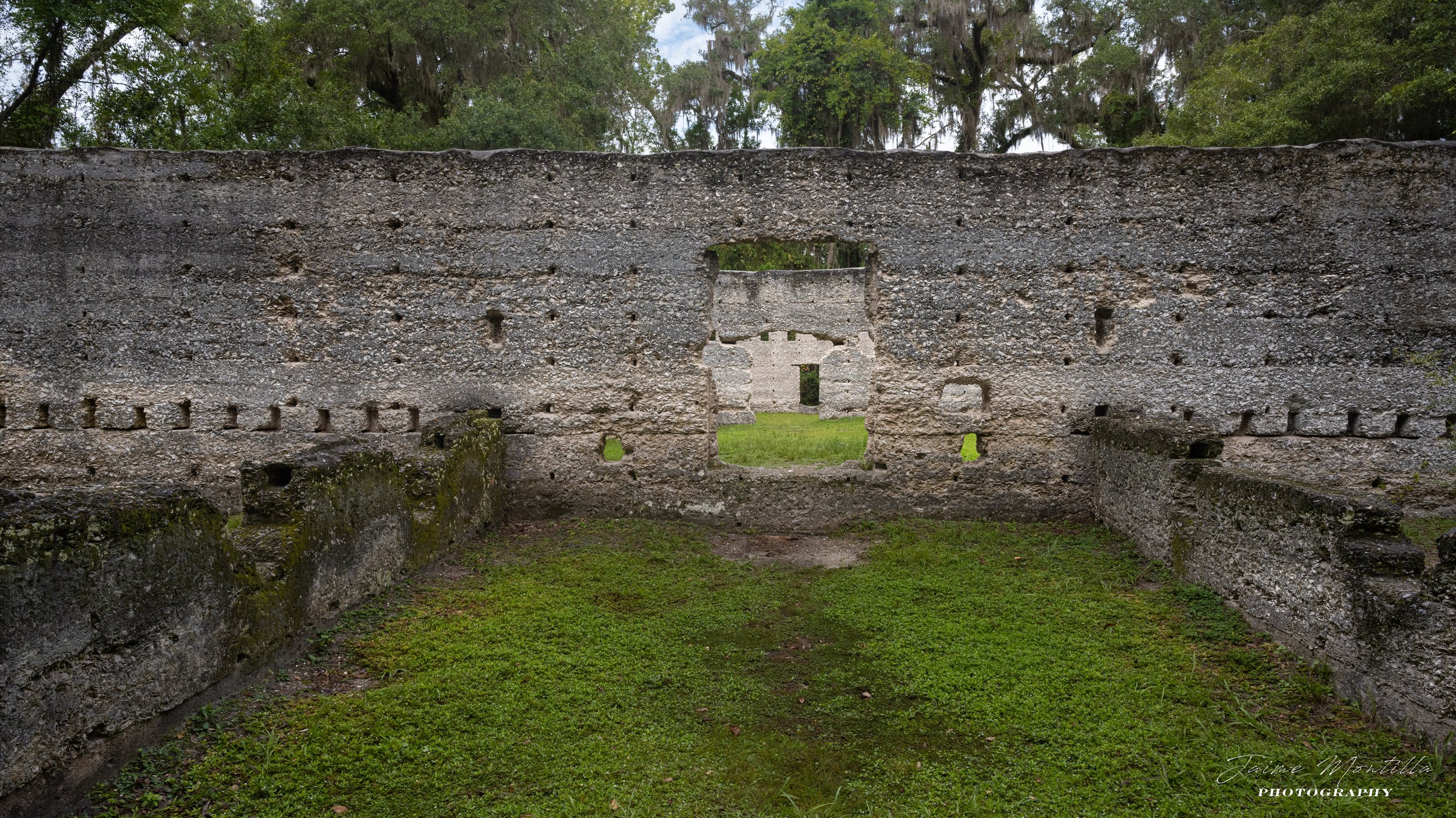
McIntosh Sugar Mill
The McIntosh Sugar Factory was built by John Houstoun McIntosh (1773-1836) at the New Canaan Plantation ca. 1825. In the sugar house, McIntosh installed what was supposedly the first horizontal cane mill worked by animal power.
McIntosh was born at Rice Hope Plantation to a family with ties to the American Revolution in what is now McIntosh County, GA. His mother died when he was three years old and his father when he was seven years old. He was raised by uncles Patrick and George Houstoun and inherited a good deal of wealth.
On April 20, 1792 John Houstoun McIntosh married Elizabeth Bayard of New York and settled in the five hundred acre Refuge Plantation on the Satilla River in Camden County, Georgia where he planted cotton and rice. The Refuge Plantation had been a Crown grant to his father George McIntosh in 1765. Upon the death of John Houstoun McIntosh, Refuge Plantation was inherited by his daughter Eliza Bayard McIntosh who settled there in 1836 with her husband Gen. Duncan Lamont Clinch. The plantation remained in the family until 1905.
In 1803, during Florida's Second Spanish Colonial period (1784-1821), John Houstoun MacIntosh bought Fort George Island, Florida from John McQueen. Fort George Island is located on the north side of the mouth of the St. John’s River. The property had a big house which overlooked Nassau Sound, built on a tabby foundation by McQueen in 1798.
In Florida, John Houstoun MacIntosh was a leader in the Patriot War, a rebellion against the Spanish government to free the residents of East Florida from the sovereignty of Spain and wrest the territory east of the Apalachicola River for cession to the United States. On July 17,1812 McIntosh signed the "Constitution of East Florida" as President of the Provisional Government.
Soon after the establishment of the provisional government of East Florida, the patriots successfully attacked Fort San Carlos on Amelia Island and hoisted the flag of the United States. A company of United States troops was then garrisoned there. Enthused with their victory and confident of the backing by the American government, they began their march on to St. Augustine. Due to political pressure from Spain and England, the American government failed to back the attack on St. Augustine, which never happened, and on March 16, 1813 withdrew their troops from the fort in Amelia Island.
The McIntosh's lived at Fort George Island for ten years until mid 1813. In 1817, Fort George was acquired by a Captain Kingsley, a Scotsman, who obtained it by foreclosure of a mortgage. McIntosh settled back in Georgia on a six hundred and fifty acre property he had acquired in 1811 from James Seagrove called Marianna. It was situated on King’s Bay, across from Cumberland Island. In 1819, McIntosh purchased two thousand nine hundred more acres adjacent to Marianna from John Boog, including the "Dark Entry” swamp, and in 1821 he acquired one thousand and forty acres, the remainder of the land included in the grant given to James Seagrove, which he named New Canaan.
Between 1816 and 1826 Georgia enjoyed great prosperity from a cotton boom, but at the same time sugarcane had become popular with planters on the Georgia seacoast. Ca. 1806, Thomas Spalding (1774-1851) of Sapelo Island, began experimenting with sugarcane, achieving proficiency planting sugarcane and producing sugar. He also experimented with the use of tabby in the construction of buildings for the factory. His result became known as “the Spalding method.”
McIntosh lost a small fortune while in Florida where he personally financed the rebellion against the Spanish government. He was able to recover some of it by planting cotton at Refuge Plantation. Encouraged by his friend Thomas Spalding, McIntosh turned his attention and resources to the sugar industry. After having cleared his land and planted sugarcane at New Canaan, he built a sugar house after the Spalding pattern. On the suggestion of Spalding, who had seen the the horizontal mills propelled by steam in Louisiana, McIntosh installed a horizontal mill in his sugar house with the use of animal power, conceptual rendering depicted in the gallery below.
According to the historical sign by the ruins off of Highway 40 near Kingsland, Ga., "After McIntosh's death in 1836, New Canaan was sold to one Col. Hallowes, who changed the name of the plantation to Bollingbrook and lived there until after the Civil War. During the war, Hallowes planted cane and made sugar in the McIntosh sugar house. He also used the tabby sugar works as a starch factory, producing arrowroot starch in large quantities."
These ruins are believed to have been built in the mid to late 1820s. They are a tabby structure with very thick walls. When the sugarhouse was constructed, it is believed that thick-walled buildings such as this were essential to ensure the warmth needed for superior sugar production.
These sugar mill ruins are located at coordinates 30.79320000, -81.57731111 off Charlie Smith Highway, just past the main Stimson Gate to Kingsbay Naval Base near the town of St. Marys, GA.








